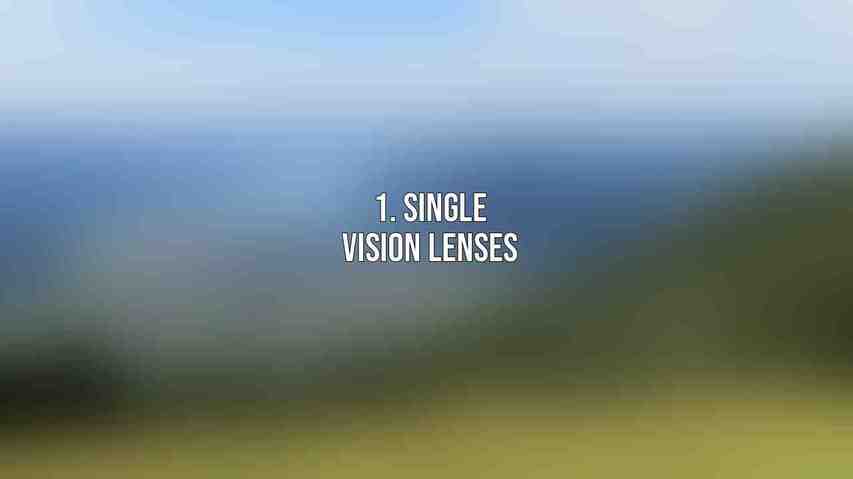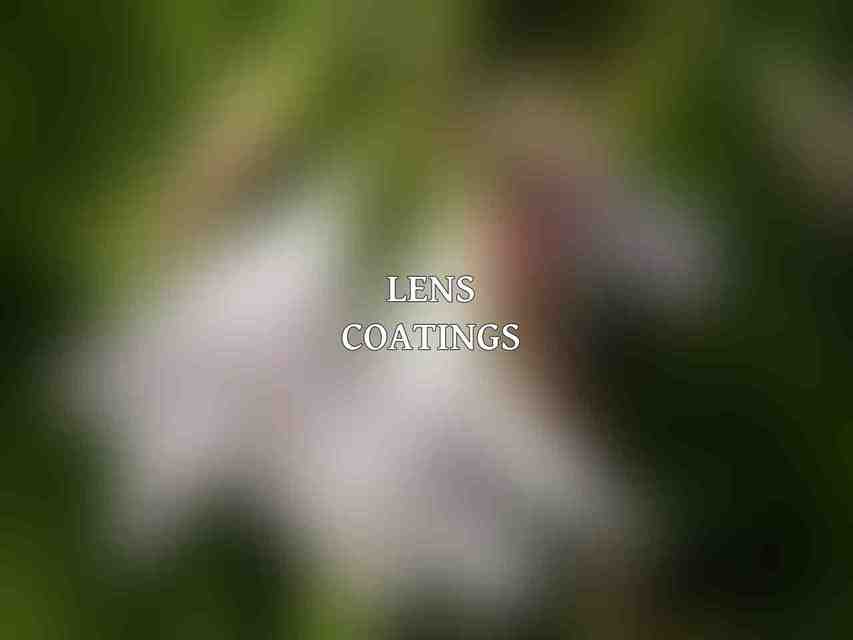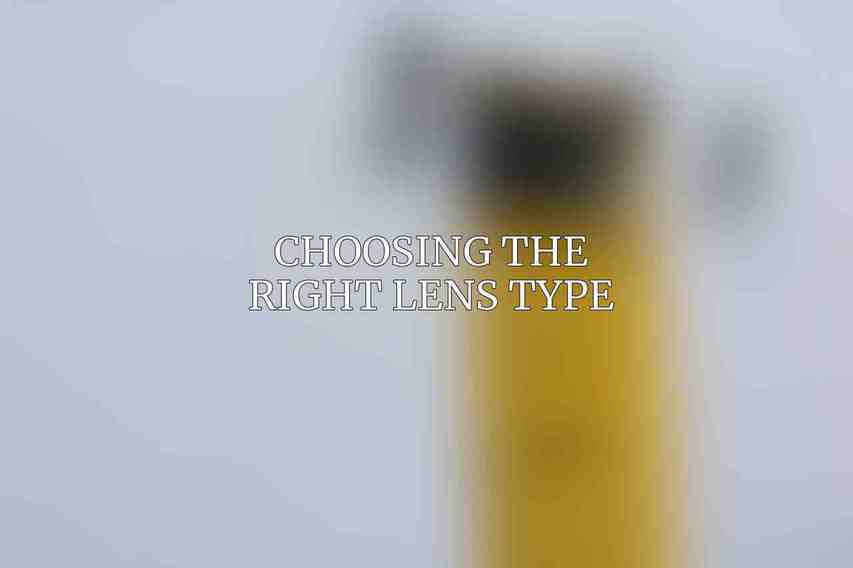When it comes to vision correction, the world of prescription lenses can often feel overwhelming with its array of options. Understanding the different types of prescription lens types is crucial for making an informed choice that suits your vision needs. The importance of selecting the right lens type cannot be understated, as it directly impacts your visual comfort and clarity.
| Feature | Description | Link | |||||||||||||||||||||||||||||||||||||||||||||||||||||||||||||||||||||||||||||||||||||||||||||||||
|---|---|---|---|---|---|---|---|---|---|---|---|---|---|---|---|---|---|---|---|---|---|---|---|---|---|---|---|---|---|---|---|---|---|---|---|---|---|---|---|---|---|---|---|---|---|---|---|---|---|---|---|---|---|---|---|---|---|---|---|---|---|---|---|---|---|---|---|---|---|---|---|---|---|---|---|---|---|---|---|---|---|---|---|---|---|---|---|---|---|---|---|---|---|---|---|---|---|---|---|
| Single Vision Lenses | Lenses that correct for nearsightedness (myopia) or farsightedness (hyperopia). | Link to Single Vision Lenses | |||||||||||||||||||||||||||||||||||||||||||||||||||||||||||||||||||||||||||||||||||||||||||||||||
| Bifocal Lenses | Lenses that have two different focal points, one for near vision and one for distance vision. | Link to Bifocal Lenses | |||||||||||||||||||||||||||||||||||||||||||||||||||||||||||||||||||||||||||||||||||||||||||||||||
| Trifocal Lenses | Lenses that have three different focal points, one for near vision, one for intermediate vision, and one for distance vision. | Link to Trifocal Lenses | |||||||||||||||||||||||||||||||||||||||||||||||||||||||||||||||||||||||||||||||||||||||||||||||||
| Progressive Lenses | Lenses that have a gradual change in power from the top of the lens to the bottom, providing clear vision at all distances. | Link to Progressive Lenses | |||||||||||||||||||||||||||||||||||||||||||||||||||||||||||||||||||||||||||||||||||||||||||||||||
| Specialty Lenses | Lenses that are designed for specific purposes, such as computer glasses, sports glasses, or sunglasses. | Link to Specialty Lenses | |||||||||||||||||||||||||||||||||||||||||||||||||||||||||||||||||||||||||||||||||||||||||||||||||
| Visit Eyeglasses.com | |||||||||||||||||||||||||||||||||||||||||||||||||||||||||||||||||||||||||||||||||||||||||||||||||||
Types of Prescription Lenses
1. Single Vision Lenses

Single vision lenses are designed to correct vision at a single distance, whether it be for near or far vision. These lenses come in two main types:
| Types of Single Vision Lenses | Description |
|---|---|
| Convex lenses | Corrects farsightedness (hyperopia) |
| Concave lenses | Corrects nearsightedness (myopia) |
Multifocal Lenses
Multifocal lenses cater to individuals with varying vision needs at multiple distances within one lens. Some common types include:
- Bifocals: Offering separate zones for near and far vision.
- Trifocals: Providing an additional zone for intermediate vision.
- Progressive lenses: Also known as no-line bifocals, these lenses offer a seamless transition between vision zones.
Special Purpose Lenses
Special purpose lenses address specific needs beyond traditional vision correction. Some notable types include:
- Blue light blocking lenses to reduce exposure to harmful blue light from digital devices.
- Polarized lenses that block glare and enhance contrast.
- Transition lenses that automatically darken in sunlight.
- Photochromic lenses, similar to transitions, changing tint based on light exposure.
Lens Materials
The choice of lens material can significantly impact your eyewear experience. Here are some common lens materials:
| Lens Materials | Features |
|---|---|
| Plastic (CR-39) | Lightweight, impact-resistant, and cost-effective |
| Polycarbonate | Stronger than plastic, ideal for sports and active individuals |
| High-index plastic | Thinner and lighter suitable for higher prescriptions |
| Glass | Scratch-resistant with optimal clarity, but heavier and more fragile |
Lens Coatings

Lens coatings enhance the functionality and durability of your lenses. Some common coatings include:
- Anti-reflective coating to reduce glare and reflections.
- Scratch-resistant coating for protecting lenses from damage.
- UV protection to shield your eyes from harmful UV radiation.
- Hydrophobic coating that repels water and eases cleaning.
- Anti-fog coating to prevent lenses from fogging up.
Choosing the Right Lens Type

Selecting the right lens type involves considering various factors tailored to your individual needs:
- Prescription requirements: Determine if you need single vision or multifocal lenses.
- Lifestyle considerations: Assess if specialized lenses like blue light blockers or polarized lenses suit your activities.
- Lens material selection: Choose based on weight, durability, and visual requirements.
- Lens coatings: Opt for coatings that enhance comfort, protection, and clarity.
Eyeglasses.com: Prescription Lens Experts
Eyeglasses.com stands out as a trusted source for a wide range of prescription lens types. With a focus on customer satisfaction, Eyeglasses.com offers:
- A diverse selection of prescription lens types to cater to all vision needs.
- Expert guidance and personalized recommendations for choosing the right lenses.
- High-quality lenses sourced from reputable manufacturers guaranteeing visual clarity.
- Affordable pricing and the convenience of online ordering for a hassle-free experience.
Understanding the intricacies of prescription lens types is paramount to ensure optimal vision correction and comfort. By considering factors such as lens type, material, and coatings, you can make an informed decision tailored to your specific needs. Eyeglasses.com emerges as a reliable destination for all your prescription lens requirements, offering quality lenses and expert guidance. Visit Eyeglasses.com today to discover the perfect lenses for your vision needs.
Frequently Asked Questions
What are the different types of prescription lens materials available?
Prescription lens materials include plastic, polycarbonate, and high-index. Each type has its own benefits such as being lightweight, impact-resistant, and thinner for higher prescriptions.

